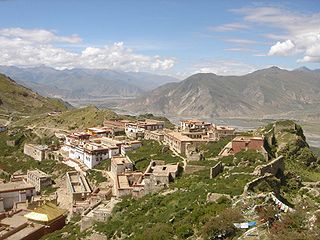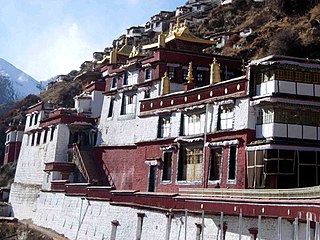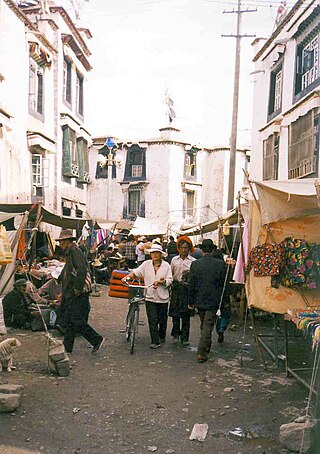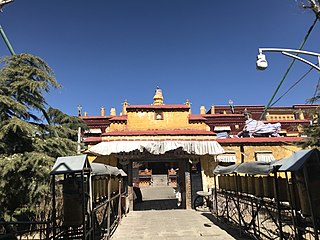10 Sights in Lhasa, China (with Map and Images)
Legend
Premium Sights
Book tickets, guided tours and activities in Lhasa.
Guided Free Walking Tours
Book free guided walking tours in Lhasa.
Welcome to your journey through the most beautiful sights in Lhasa, China! Whether you want to discover the city's historical treasures or experience its modern highlights, you'll find everything your heart desires here. Be inspired by our selection and plan your unforgettable adventure in Lhasa. Dive into the diversity of this fascinating city and discover everything it has to offer.
Activities in LhasaGanden Monastery or Ganden Namgyeling or Monastery of Gahlden is one of the "great three" Gelug university monasteries located in Dagzê County, Lhasa, Tibet. The other two are Sera Monastery and Drepung Monastery. Ganden Monastery was founded in 1409 by Je Tsongkhapa Lozang-dragpa, founder of the Gelug order. The monastery was destroyed after 1959, but has since been partially rebuilt. Another monastery with the same name and tradition was established in Southern India in 1966 by Tibetan exiles.
2. Potala Palace
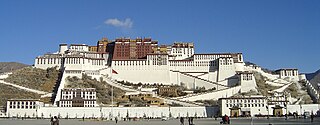
The Potala Palace is a dzong fortress in Lhasa, capital of the Tibet Autonomous Region in China. It was the winter palace of the Dalai Lamas from 1649 to 1959, has been a museum since then, and a World Heritage Site since 1994.
3. Chagpori
Chagpori, Chakpori, Chokpori, Chagpo Ri is a spirit-mountain of Vajrapani in Lhasa, Tibet. It is south of Potala and just to the left when one is facing the Potala. It is considered to be one of the four holy mountains of central Tibet.
4. Tsurphu Monastery
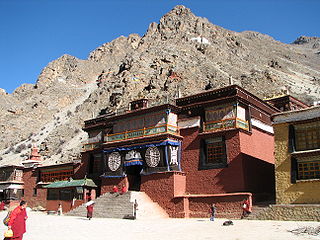
Tsurphu Monastery or Tölung Tsurphu is a gompa which serves as the traditional seat of the Karmapa, the head of the Karma Kagyu lineage of Tibetan Buddhism. It is located in Gurum in Doilungdêqên District, Tibet Autonomous Region, China, 70 kilometres (43 mi) from Lhasa.
5. Drigung Monastery
Drigung Thil Monastery is a monastery in Maizhokunggar County, Lhasa, Tibet founded in 1179. Traditionally it has been the main seat of the Drikung Kagyu tradition of Tibetan Buddhism. In its early years the monastery played an important role in both religion and politics, but it was destroyed in 1290 by Mongol troops under the direction of a rival sect. The monastery was rebuilt and regained some of its former strength, but was primarily a center of meditative studies. The monastery was destroyed after 1959, but has since been partly rebuilt. As of 2015 there were about 250 resident monks.
6. Ani Tsankhung Nunnery
Ani Tsankhung Nunnery is a nunnery of the Gelug school of Tibetan Buddhism in the city of Lhasa, Tibet Autonomous Region, China. It was built in the 15th century on a site that had been used for meditation by the 7th century Tibetan king Songtsen Gampo. The nuns support themselves through alms and manufacturing items such as clothing and printed texts.
7. Muru Nyingba Monastery
Muru Ningba or Meru Nyingba is a small Buddhist monastery located between the larger monasteries of Jokhang and Barkhor in the city of Lhasa, Tibet, China. It was the Lhasa seat of the former State Oracle who had his main residence at Nechung Monastery.
8. Yangpachen Monastery
Yangpachen Monastery is a Tibetan Buddhist monastery in Yangpachen, in the Lhasa Prefecture of Tibet. It is historically the seat of the Shamarpas of Karma Kagyü. It is about 85 km (53 mi) southeast of Lhasa "on the northern side of the Lhorong Chu valley above the Lhasa-Shigatse highway."
9. Tsomon Ling
Tsomon Ling, Tsomonling, Tsome Ling, Chomoling is a temple in inner Lhasa, Tibet Autonomous Region, China, south of the Ramoche Temple, and on the corner of one of the main roads, Dekyi Shar Lam. It was one of the Four Royal Colleges or Regency Temples of Lhasa built during the 17th century after the Fifth Dalai Lama assumed both temporal as well as spiritual power. The other three Ling are Tengye Ling, Kunde Ling, and Drib Tsemchok Ling.
10. Mila Mount
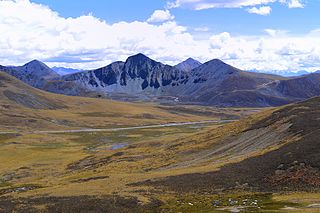
Mila Mountain, or Mira Mountain, or Milha Mountain, is a mountain in the Tibet Autonomous Region of China, roughly 150 kilometres (93 mi) by road northeast of Lhasa. The road pass that runs by its peak is one of the highest on China National Highway 318.
Share
How likely are you to recommend us?
Disclaimer Please be aware of your surroundings and do not enter private property. We are not liable for any damages that occur during the tours.
